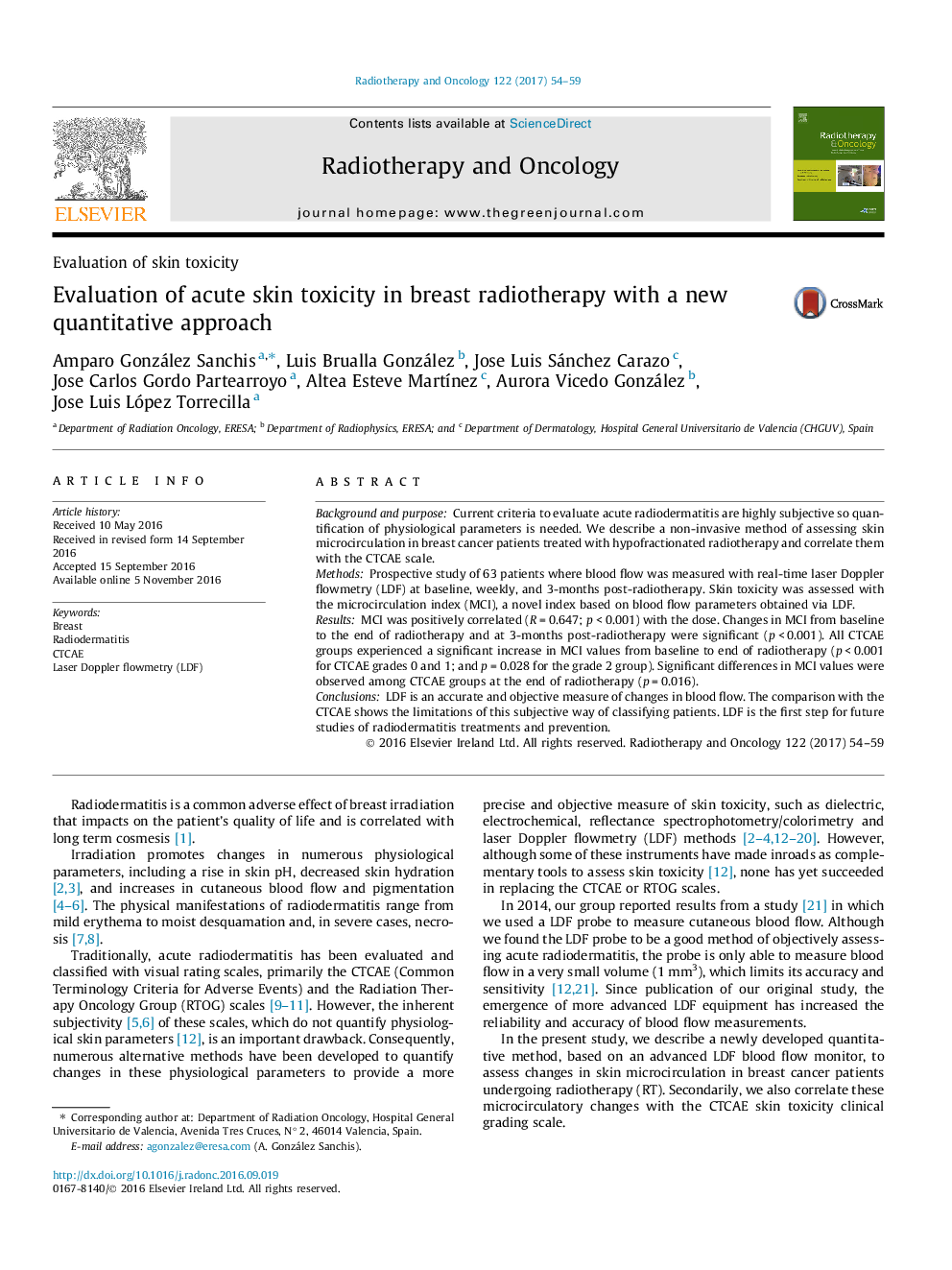| Article ID | Journal | Published Year | Pages | File Type |
|---|---|---|---|---|
| 5529733 | Radiotherapy and Oncology | 2017 | 6 Pages |
Background and purposeCurrent criteria to evaluate acute radiodermatitis are highly subjective so quantification of physiological parameters is needed. We describe a non-invasive method of assessing skin microcirculation in breast cancer patients treated with hypofractionated radiotherapy and correlate them with the CTCAE scale.MethodsProspective study of 63 patients where blood flow was measured with real-time laser Doppler flowmetry (LDF) at baseline, weekly, and 3-months post-radiotherapy. Skin toxicity was assessed with the microcirculation index (MCI), a novel index based on blood flow parameters obtained via LDF.ResultsMCI was positively correlated (R = 0.647; p < 0.001) with the dose. Changes in MCI from baseline to the end of radiotherapy and at 3-months post-radiotherapy were significant (p < 0.001). All CTCAE groups experienced a significant increase in MCI values from baseline to end of radiotherapy (p < 0.001 for CTCAE grades 0 and 1; and p = 0.028 for the grade 2 group). Significant differences in MCI values were observed among CTCAE groups at the end of radiotherapy (p = 0.016).ConclusionsLDF is an accurate and objective measure of changes in blood flow. The comparison with the CTCAE shows the limitations of this subjective way of classifying patients. LDF is the first step for future studies of radiodermatitis treatments and prevention.
